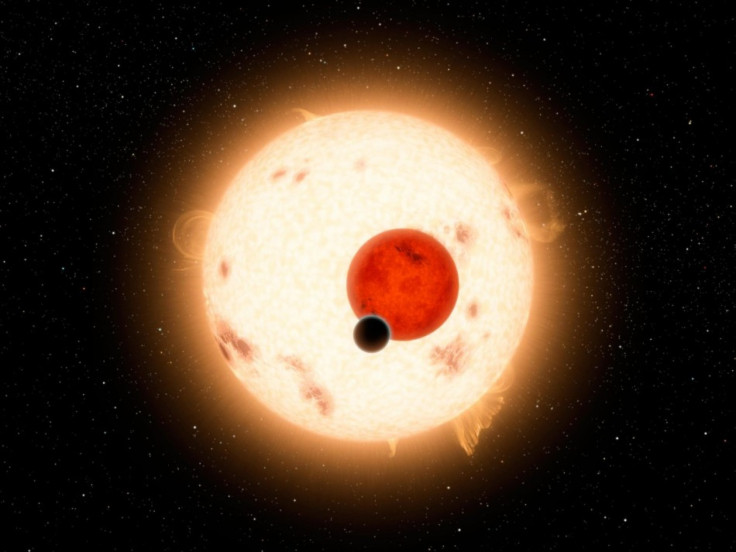A Planet With Two Suns Discovered: 'Indication of What is Possible'

No, it's not from Star Wars, where the fictional double sunset on Tatooine made such a memorable imprint years ago. But astronomers from NASA have discovered a planet 200 light-years from Earth that apparently orbits two suns, like Tatooine.
Researchers aren't surprised at the discovery, yet it's the first time they have discovered and viewed a planet with two stars. The finding reveals the vastness of our universe, and that we still don't know all that is out there. Researchers don't think life exists on the planet, unlike on the fictional Tatooine.
Still, the finding is remarkable.
This is a fundamentally different kind of planetary system than has ever been discovered before, said astrophysicist Laurance Doyle on the Web site of the SETI Institute, which was involved in the discovery. It's an indication of what is possible -- something entirely new and different, something very exotic.
First recognized by NASA's $600 million Kepler space telescope, the rare planet is the first confirmed solar system of its kind. Named Kepler-16b, the planet is about the size of Saturn and 200 light-years from Earth.
NASA said the planet is cold, gaseous and not thought to harbor life. Astronomers say the finding is notable, since it demonstrates the diversity of planets in our galaxy. Kepler detected the planet by observing transits -- where the brightness of a parent star dims, according to NASA, from the planet crossing in front of it.
This discovery confirms a new class of planetary systems that could harbor life, said Kepler Principal Investigator William Borucki, in a NASA statement. Given that most stars in our galaxy are part of a binary system, this means the opportunities for life are much broader than if planets form only around single stars. This milestone discovery confirms a theory that scientists have had for decades but could not prove until now.
The planet circles its twin stars in the constellation Cygnus about every 229 days, NASA researchers told Science magazine.
The reality goes beyond the imagination of the most creative theorist in astronomy or science fiction writer, said Northwestern University astrophysicist Fred Rasio, who wasn't involved in the study. Just about anything you could think of as a planetary system is actually out there.
The discovery of Kepler-16b is one of several key findings this week of worlds beyond in our solar system. In all, four different research teams from Europe and the U.S. have reported finding 74 previously unknown exoplanets, as worlds orbiting other stars are called, according to The Wall Street Journal.
More than a dozen of the findings are slightly larger than Earth, while the largest is about 3.5 times Earth's size.
According to NASA, A research team led by Laurance Doyle of the SETI Institute in Mountain View, Calif., used data from the Kepler space telescope, which measures dips in the brightness of more than 150,000 stars, to search for transiting planets. Kepler is the first NASA mission capable of finding Earth-sized planets in or near the 'habitable zone,' the region in a planetary system where liquid water can exist on the surface of the orbiting planet.
Scientists then detected the new planet in the Kepler-16 system, NASA said. The pair of orbiting stars eclipse each other from our vantage point on Earth, and when the smaller star partially blocks the larger star a primary eclipse occurs, and a secondary eclipse occurs when the smaller star is completely blocked by the larger star.
This discovery confirms that Kepler-16b is an inhospitable, cold world about the size of Saturn and thought to be made up of about half rock and half gas, said NASA.
© Copyright IBTimes 2024. All rights reserved.





















